National climate targets are inadequate, actual emissions are reaching new record highs instead of falling, and the concentration of greenhouse gases in the atmosphere is higher than ever – shortly before COP29, high-profile reports on the current state of the global climate bring a whole storm of bad news. Bernhard Pötter analyzes what’s behind it all.
The outlook for India is less gloomy: Urmi Goswami reports on progress in climate diplomacy with Germany and a new roadmap for green hydrogen. There also seems to be a small silver lining on the horizon in the debate on green growth: More and more regions are able to decouple their economic growth from emissions, as a recent study shows.
Speaking of weather, our Must Reads include a text explaining why climate change is making hailstones bigger.
We’re staying tuned for you – especially now that the study and debate situation is getting stormier again ahead of COP29.

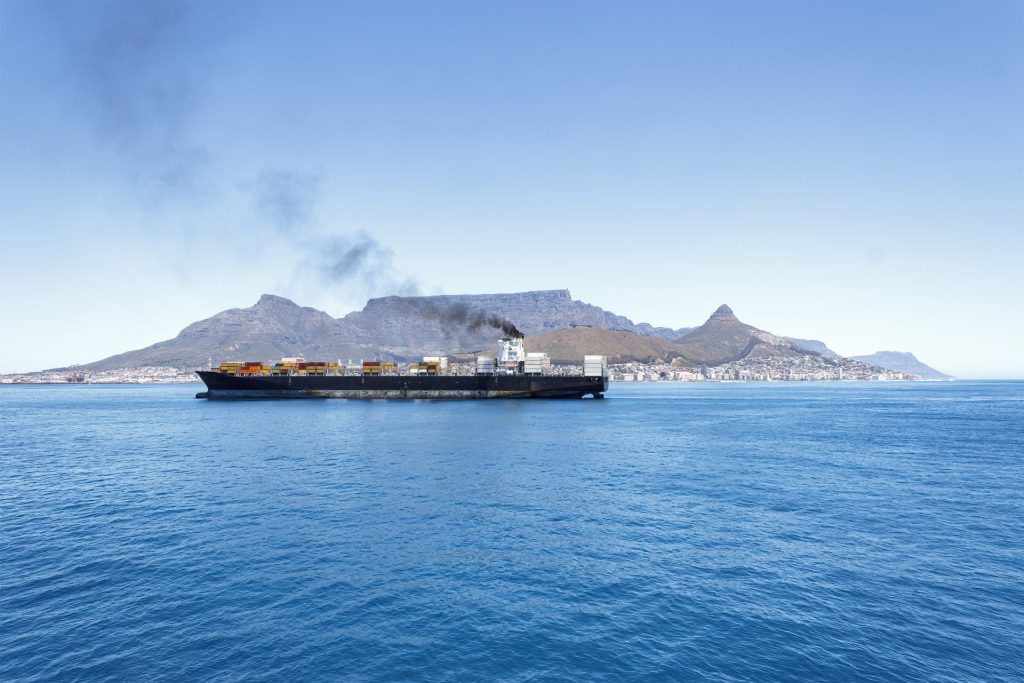
Two weeks before the start of COP29, a collaboration of research institutes is addressing delegations and key figures in climate policy and diplomacy with an update on the latest trends in climate science. In this year’s “10 New Insights into Climate Science“, the team of researchers from think tanks FutureEarth, The Earth League and the World Climate Research Programme present ten trends that they believe should be given more attention and are often not the focus of attention.
Many scientists have the impression that the decision-makers at the climate negotiations do not have all the important facts at their fingertips. They are “not even up to date with the science of the 2021 IPCC report”, said Johan Rockström, Co-Head of the Potsdam Institute for Climate Impact Research (PIK) and one of the authors. The IPCC report is also often “too optimistic” from today’s perspective.
The researchers therefore remind those responsible of the current situation: 2023 (and probably also 2024) was the warmest year on record with an average of 1.45 degrees. Sea temperatures were unusually high for 14 months. This warming has made extreme weather events much more likely in some cases, such as the unusual forest fires in Canada, the deadly heatwave in South and Southeast Asia and the heavy rainfall in the Mediterranean region with the flood disaster in Libya. The resolutions of COP28, for example on the global stocktake, the move away from fossil fuels and the financing of climate damage, must now be implemented.
The report, which has been around since 2020, is not intended to be a “top ten” list, but rather to illustrate the breadth of the topic. This year, it highlights the following topics:
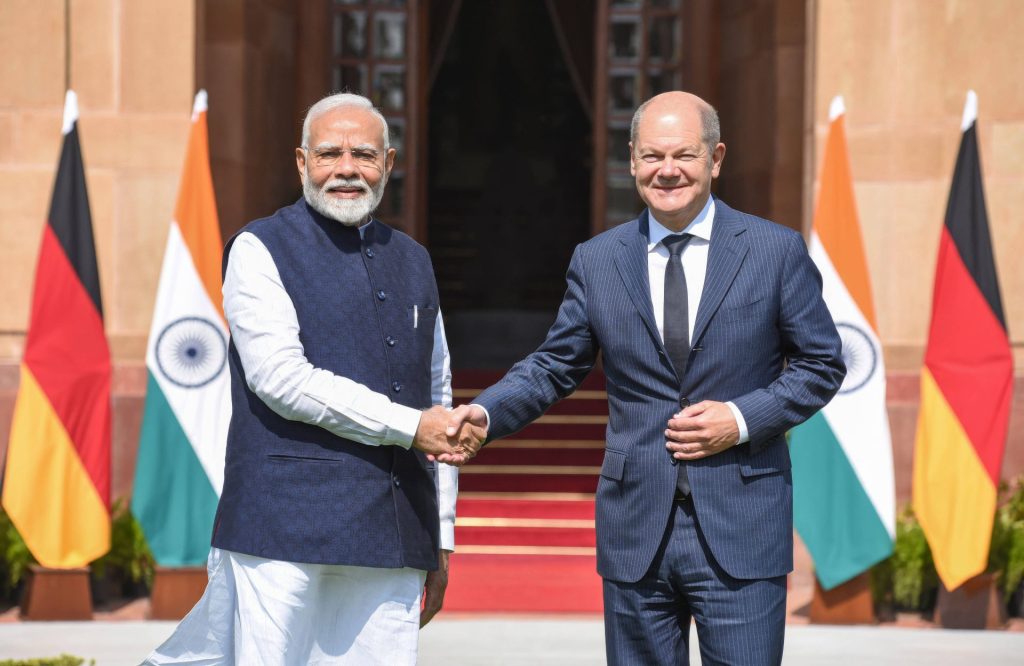
India and Germany took an important step in their efforts to achieve the goals of the Paris Agreement and the UN 2030 Agenda for Sustainable Development on Friday with the launch of the Indo-German Roadmap for Green Hydrogen. The plan was finalized at the seventh inter-governmental consultations in New Delhi chaired by German Chancellor Olaf Scholz and Indian Prime Minister Narendra Modi. It is part of the Indo-German Partnership for Green and Sustainable Development, which was launched by the two heads of state and government in May 2022.
However, the climate cooperation between the two countries also goes beyond this – for example, the two countries are promoting the expansion of solar energy through the International Solar Alliance.
The Green Hydrogen Roadmap aims to make a significant contribution to reducing India’s and Germany’s dependence on fossil fuel imports, decarbonizing both economies and building robust national green hydrogen economies. With the help of green hydrogen, the two countries want to achieve their climate targets and become net-zero economies by 2070 (India) and 2045 (Germany). However, for this to succeed, the production of green hydrogen must be expanded worldwide – and demand must also grow, because only through economies of scale will production become cheaper and therefore economically viable.
India and Germany established the Indo-German Green Hydrogen Task Force in 2022. The roadmap it has drawn up focuses on four areas:
In addition, the plan outlines strategies to promote private sector investment, trade and export of green hydrogen and facilitate information exchange, particularly with regard to hard-to-decarbonize sectors and certification standards.
The two countries want to jointly promote climate-friendly transport and work together on decentralized stationary energy applications as well as hydrogen transport and storage technologies. This means, for example, that there will be sustainable refueling options for international cargo ships and aircraft in both countries, as well as an exchange of information on suitable transport options for green hydrogen over short, medium and long distances.
In order to continuously exchange information on how effective the various strategies are, a separate mechanism is being set up within the framework of the Indo-German Energy Forum.
The roadmap allows companies to have investments in the production of green hydrogen promoted in India and Germany. One example: India’s push for green hydrogen includes the Strategic Interventions for Green Hydrogen Transition (SIGHT) program. It was launched in 2023 with a volume of 174.90 billion Indian rupees (around €1.92 billion) and comprises two financial incentive mechanisms to promote the domestic manufacture of electrolyzers and the production of green hydrogen.
With the roadmap, German companies setting up green hydrogen production in India will have access to these financial incentives. Similarly, subsidies for the construction of electrolyzers for the production of green hydrogen in Germany will be available to Indian companies.
However, the climate partnership between India and Germany is not just about moving away from fossil fuels, and it is not limited to bilateral efforts. The two countries are working together to support the global energy transition by driving the necessary technology and market development through closer cooperation in developing countries.
The International Solar Alliance (ISA) is an important example of this Indo-German partnership across national borders. The ISA was launched jointly with France at the 2015 Paris Climate Summit and aims to use solar energy to improve access to electricity in developing countries that are energy-poor despite their high solar potential. India is the leader of the ISA.
However, as the use of solar energy also became increasingly urgent in other parts of the world, the ISA amended its framework agreement and opened it up to all UN states. After the amendment came into force in 2021, Germany became the fifth country outside the tropics to sign the Framework Agreement and join the Alliance in August 2021.
As an ISA member, Germany is important for the development of competencies. It helps to ensure that the other member countries have the necessary manpower and capacity to drive forward the expansion of solar capacity and the use of solar energy within the energy systems.
Ajay Mathur, Director General of the International Solar Alliance, emphasizes that Germany can play a decisive role within the ISA. “Solar energy is an area where there are hardly any innovations that can be used in developing countries, especially on the user side. Here I would like to see German technology come to the fore and produce these innovations in countries like India to reduce costs.” The other area in which Mathur highlights Germany’s particular capabilities is new mechanisms for financial cooperation.
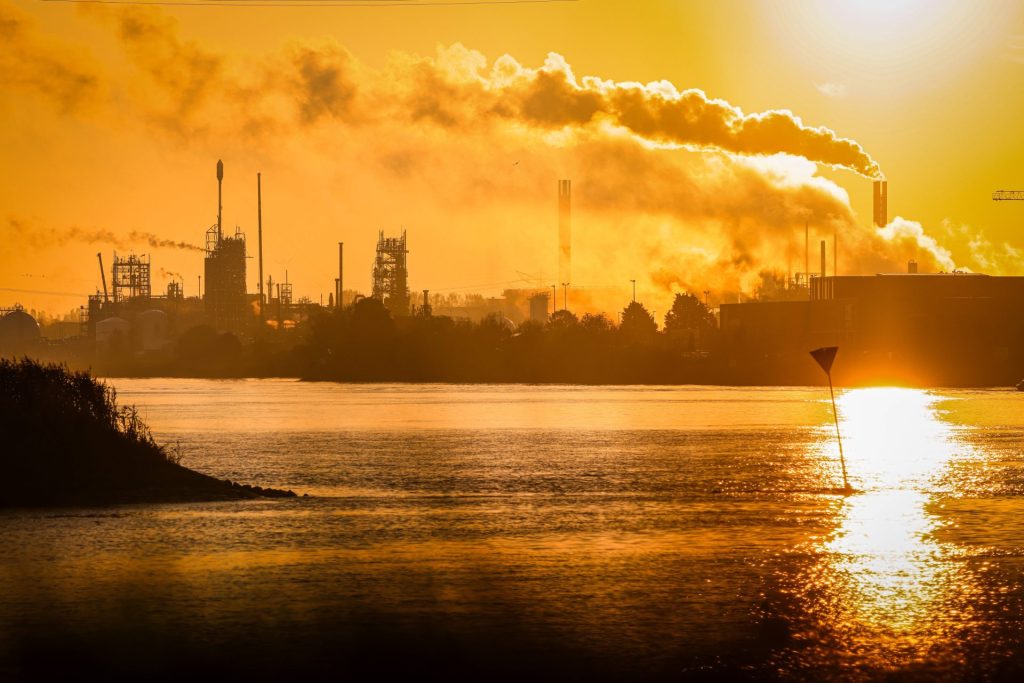
Two weeks before the start of COP29, three new UN reports show how far the world is from its climate targets and that a key trend has not yet been broken: Instead of decreasing, greenhouse gas emissions reached a new high in 2023 as well; therefore, the concentration of CO2, methane and other drivers of global warming continued to increase in the atmosphere. And instead of a drastic reduction, the current national climate plans of the UN member states (NDCs) only point to a slight decrease in emissions.
“The plans are miles away from what is needed”: This is the conclusion drawn by the head of the UN Climate Change Secretariat, Simon Stiell, in light of the latest NDC synthesis report. According to the report, the current plans will lead to emissions of 51.5 gigatons of CO2 equivalents in 2030, which is around 2.6 percent below the 2019 figures. However, according to IPCC calculations, emissions would have to fall by 43 percent by 2030 to comply with the 1.5-degree limit.
With the current NDCs, 86 percent of the emissions budget for 1.5 degrees would already be exhausted by 2030, according to the UN Climate Change Secretariat. This would mean that there would only be time until 2033 before the budget would be completely exhausted and the 1.5 degrees would be reached in the long term.
The NDCs differ in their ambition in terms of whether countries can count on external assistance (conditional) or have to accomplish their tasks alone (unconditional). Countries must register new NDCs under the Paris Agreement by the spring.
According to Stiell, they would have to pass the “ABC test” in order to significantly reduce emissions: Ambition, Broken down, Credible: ambitious new national targets are needed for all greenhouse gases; broken down to all sectors of the economy and credibly backed up with measures and funding.
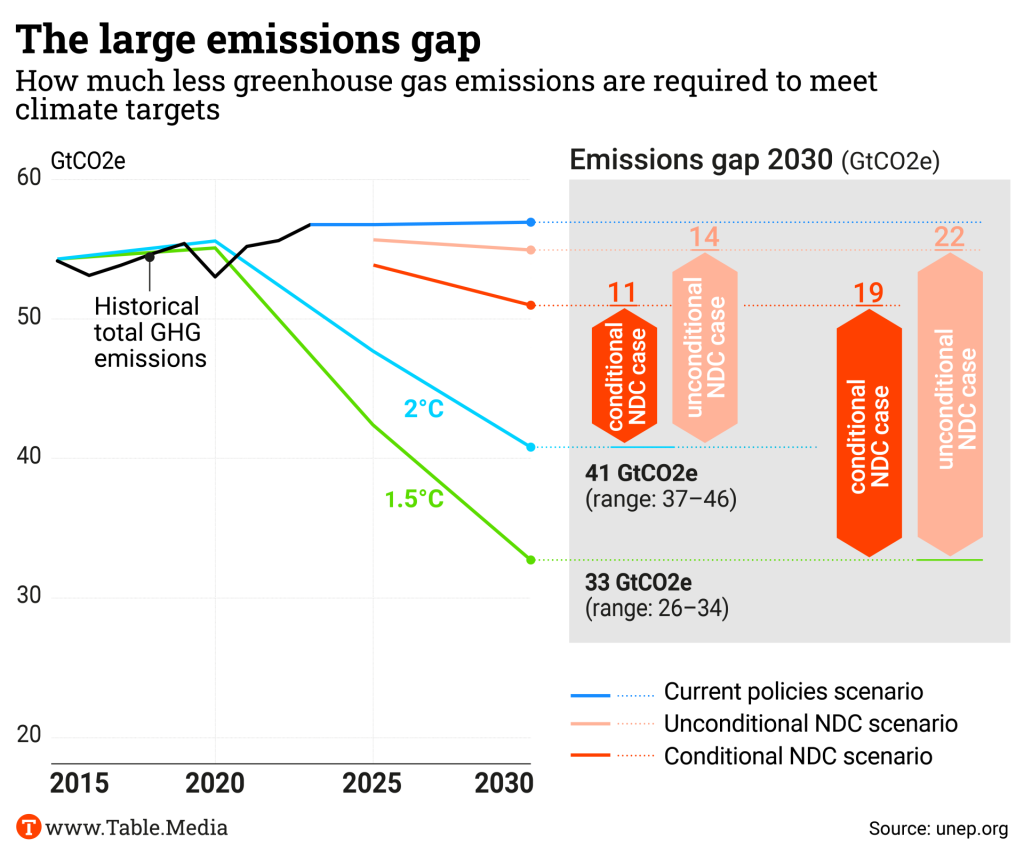
At the end of last week, the “Emissions Gap Report” published by the UN environmental organization UNEP once again highlighted the contradictions between official climate targets and emissions trends. The statistics with the pleading title “No more hot air… please!” shows that total emissions reached a new record of 57.1 billion tons of CO2 equivalents in 2023.
This is another increase of 1.3 percent from the last record high in 2022. There are still drastic differences in per capita emissions between countries, in terms of current and historical emissions. The countries’ current NDCs are therefore far from being on track to achieve the climate targets.
The net-zero plans of the G20 countries, which are responsible for around 80 percent of emissions, also cause “concern” at the UNEP: Some countries such as China or India have not yet reached their emissions peak, while emissions are not falling fast enough in others. However, according to the report, the G20 has the main responsibility to close the gap between ambition and reality and to do so faster than the other countries.
According to UNEP, a lot of time has been wasted in the past, which has reduced the scope for action. It is important to act quickly: The difference between conditional NDCs and a continuation of existing policies amounts to up to 0.5 degrees Celsius, according to the report. There is great potential to reduce emissions in many sectors and many countries.
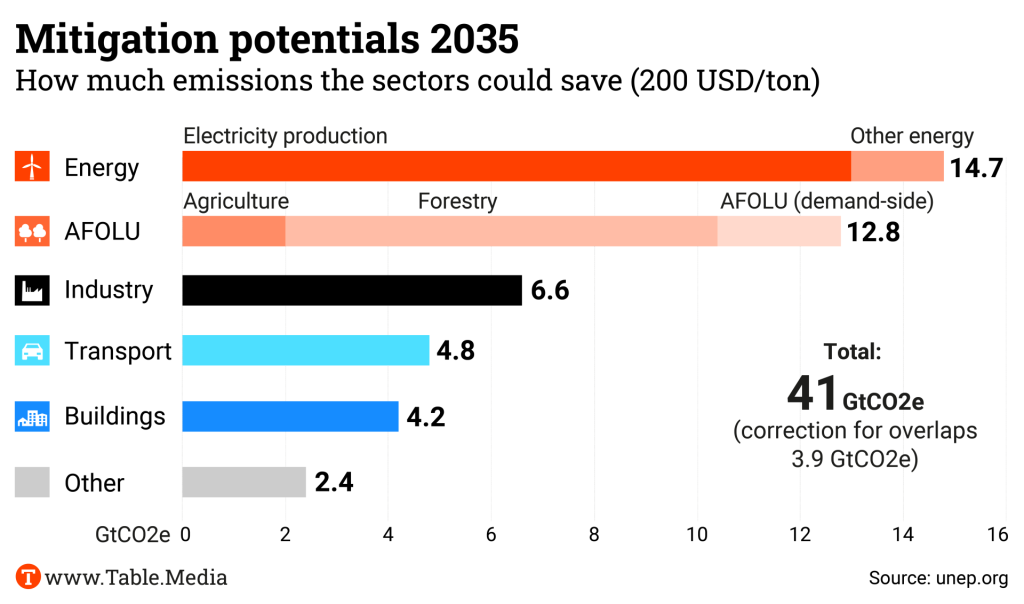
However, this would require major effort through political measures, technical assistance and financial support. And then through new NDCs in February that meet these standards. In other words, exactly what will be decided at COP29 in Baku.
The latest annual bulletin from the World Meteorological Organization (WMO) also reports new record levels of greenhouse gases. According to this, the CO2 concentration in 2023 has climbed by 2.3 ppm to a level of 420 ppm. This means that CO2 levels have risen by 151 percent compared to pre-industrial times, methane by 265 percent and nitrogen dioxide by 125 percent. Around half of CO2 emissions accumulate in the atmosphere, a third is absorbed by sinks on land and a quarter by the oceans.
“This should set off alarm bells, we are clearly beyond a pathway to the Paris Agreement”, said WMO Secretary-General Celeste Saulo. “This is more than statistics. Every ppm and every fraction of a degree has a real impact on our lives and our planet.”
The WMO also concludes the following from its report:
According to a new study by the Potsdam Institute for Climate Impact Research (PIK), 30 percent of regions worldwide have managed to reduce their CO2 emissions while their economies have grown. The trend is intensifying, which is “important progress”, the PIK announced – but progress is not fast enough to achieve the goals of the Paris Climate Agreement. For their study, the researchers examined data from 1,500 regions from the past 30 years, for example from Chinese provinces, US states and German federal states. The regions examined were responsible for 85 percent of global CO2 emissions.
According to the study, national climate protection policy plays a decisive role in decoupling economic growth and emissions. However, measures at regional level can also have a significant impact: According to PIK researcher and study author Maria Zioga, cities in the EU that have implemented climate action plans and regions whose climate measures have received increasing financial support have higher decoupling rates. Europe consistently performs better than other parts of the world. In many European regions, the trend towards decoupling is continuous, while the development in North America and Asia tends to fluctuate. ae
In the first three quarters of 2024, 0.72% of the German building stock underwent energy-efficient refurbishment. This is the result of a recent survey conducted by B+L Marktdaten Bonn on behalf of the German Energy Efficient Building Envelope Association (BuVEG). On this basis, the association assumes that the rate will be 0.69% in 2024 as a whole. This means that “the two percent mark required to achieve the 2030 climate targets will still be missed by a wide margin”, according to the association. Last year, the renovation rate was 0.7 percent, compared to 0.88 percent the year before.
The building sector is responsible for around 30 percent of CO2 emissions in Germany. According to the BuVEG, current renovation activity in 2024 and 2025 would result in “around 275,000 residential units being energy-efficiently upgraded each year”. However, 460,000 residential units will be needed in 2025 and 730,000 in 2030, according to the association, citing the German Energy Agency dena.
The current BuVEG figures confirm previous data from other surveys. BuVEG Managing Director Jan Peter Hinrichs called them “worrying” and said that a trend reversal was not in sight. Hinrichs warns of high heating bills. The shortage of skilled workers is one of the reasons for the low renovation rate. Added to this are rising costs and supply bottlenecks for building materials. ae
The high CO2 emissions for which the richest one percent of humanity is responsible are exacerbating hunger, poverty and also leading to increased deaths because they are fuelling the climate crisis: This is the conclusion of the report “Carbon Inequality Kills” by the non-governmental organization Oxfam. The report analyzes the emissions of the world’s 50 richest billionaires. According to the report, they produce more greenhouse gases in 90 minutes than the average person worldwide does in a lifetime. If everyone caused this many emissions, the remaining CO2 budget to stay within the 1.5-degree target would be used up in less than two days.
The super-rich also cause a lot of emissions in Germany. Hasso Plattner, for example, owns several private jets, whose emissions Oxfam calculated at over 2,000 tons of CO2 from more than 500 flights within a year. According to the Oxfam analysis, the yachts owned by billionaire Klaus-Michael Kühne also emitted almost 9,800 tons of CO2 equivalents within one year – which would take one person in Germany almost 1,000 years on average.
“Through their luxuries such as private jets and superyachts, but also through environmentally harmful investments of their wealth, the super-rich are accelerating the climate crisis and thus driving inequality and hunger”, says Serap Altinisik, CEO of Oxfam Germany. “On average, five of the richest Germans are responsible for 1,275 times as many emissions through their superyachts as the poorest one percent of Germans on average. This inequality is unsustainable”, says Altinisik. kul
The UK’s next national climate target (NDC) should aim to reduce emissions by 81% by 2035 compared to 1990 levels. This is the advice of the Climate Change Committee (CCC). The UK is expected to announce its next NDC at COP29 in Baku.
Ed Miliband, Minister for Energy Security and Net Zero in the UK, had previously asked for a proposal for the period from 2033 to 2037. In the UK, carbon budgets are set for specific periods under the Climate Change Act. For the requested period, the CCC now recommends a “6th carbon budget” of 965 MtCO2e for the requested period. In addition, emissions from international shipping and aviation should be included for the first time.
Climate Action Tracker rates the UK’s NDC to date as “almost sufficient” with a reduction of 69% by 2030. Although the UK government is not obliged to follow the CCC’s proposals, it has almost always done so in the past. kul

Thomas Speidel is something like the Swabian Gyro Gearloose of battery and charging technology. The 57-year-old electrical engineering graduate has more than 60 German and international patent applications to his name, primarily in the fields of battery technology, storage solutions and fast-charging stations for electric cars. The inventor and entrepreneur has also been President of the German Energy Storage Systems Association (BVES) since 2016.
His father Hans-Hermann Speidel and his business partner Herrmann Fritz laid the foundations for this over 40 years ago in a garage in Ostfildern-Ruit near Stuttgart. The trademark of their company Fritz Electronic was switch cabinet construction, innovative control technology and data systems for production, and later entire plants. The main customers were car manufacturers in the region.
Speidel joins the family business after completing his studies. At that time, the company was already called ADS-TEC, short for “Advanced System Technology”. He later took over the management together with his brother.
He describes the decision made around 2010 to fundamentally realign the company as a “really tough cut”. During this phase, he learned to let go of the old, says Speidel. “Otherwise it tears you apart.” His credo “Go for it!” helped him with this.
ADS-TEC becomes a holding company, while data technology becomes the independent subsidiary ADS-TEC Industrial IT. The combustion technology division, on the other hand, is discontinued. Instead, ADS-TEC Energy is launched. The development of storage and charging systems for electromobility becomes the central business area – and Speidel becomes a pioneer of the mobility revolution.
On Sunday, Speidel will receive the German Environmental Award 2024 from the German Federal Environmental Foundation (DBU) for two of its developments, the Charge Box and Charge Post fast-charging stations. At the same time, the successful transformation of the family-owned company “from a supplier of combustion engines to a driver of innovation for the energy transition and electromobility” will be honored, said BDU Secretary General Alexander Bonde.
The two DBU award-winning fast-charging stations not only work slightly differently to standard market models, they can also do more. “The battery-buffered high-performance systems are multi-tools for the energy transition, they work like a Swiss army knife“, says Speidel.
On the one hand, there is the lithium-ion battery with a capacity of 140 or 201 kilowatt hours, which is installed in the charging stations. While powerful charging stations are usually fed directly from the medium-voltage grid with 10,000 or 20,000 volts, the battery can be charged from the low-voltage grid with 230 and 400 volts that is available throughout the country.
This allows the Charge Box and Charge Post to slowly draw power from the low-voltage grid without overloading the grid. They store the electricity in the battery and can then refuel a vehicle in a matter of minutes. “Just like a toilet cistern – fill up with water slowly, release it quickly”, explains Speidel. The technology is a great advantage for the ramp-up of electromobility. This is because it allows the charging infrastructure to be expanded, even if the grid expansion is a long time coming.
However, Speidel says that his charging stations can not only refuel electric cars. “With a single investment, more can be achieved for the energy system of the future while conserving resources.” This includes avoiding grid expansion, stabilizing overloaded grids by feeding energy back from the battery storage systems and integrating local photovoltaic generation. Even use as a digital advertising pillar is possible. “We have installed large advertising panels at the Charge Post, 75 inches [approx. 2 m] in size, real billboards”, he says.
When looking to the future, Speidel sees sector coupling as the magic word, i.e. the connection of the electricity, heat and mobility sectors in integrated systems. “Electrical energy is the currency of the future – for gas, light, mobility, heat and hydrogen.” Storage systems could be a door opener for this. However, “this will only work if charging stations are approved more quickly and there are fewer formal hurdles to sector coupling”, he says, addressing politicians and administrators.
Speidel’s approach obviously also convinced the jury, which expressly recognized him “for his strategic vision and the entrepreneurial risk-taking required for this”. “For more electromobility, climate protection and a comprehensive energy transition, innovations such as those from ADS-TEC Energy are literally real trailblazers”, states BDU Secretary General Bonde. Carsten Hübner
National climate targets are inadequate, actual emissions are reaching new record highs instead of falling, and the concentration of greenhouse gases in the atmosphere is higher than ever – shortly before COP29, high-profile reports on the current state of the global climate bring a whole storm of bad news. Bernhard Pötter analyzes what’s behind it all.
The outlook for India is less gloomy: Urmi Goswami reports on progress in climate diplomacy with Germany and a new roadmap for green hydrogen. There also seems to be a small silver lining on the horizon in the debate on green growth: More and more regions are able to decouple their economic growth from emissions, as a recent study shows.
Speaking of weather, our Must Reads include a text explaining why climate change is making hailstones bigger.
We’re staying tuned for you – especially now that the study and debate situation is getting stormier again ahead of COP29.


Two weeks before the start of COP29, a collaboration of research institutes is addressing delegations and key figures in climate policy and diplomacy with an update on the latest trends in climate science. In this year’s “10 New Insights into Climate Science“, the team of researchers from think tanks FutureEarth, The Earth League and the World Climate Research Programme present ten trends that they believe should be given more attention and are often not the focus of attention.
Many scientists have the impression that the decision-makers at the climate negotiations do not have all the important facts at their fingertips. They are “not even up to date with the science of the 2021 IPCC report”, said Johan Rockström, Co-Head of the Potsdam Institute for Climate Impact Research (PIK) and one of the authors. The IPCC report is also often “too optimistic” from today’s perspective.
The researchers therefore remind those responsible of the current situation: 2023 (and probably also 2024) was the warmest year on record with an average of 1.45 degrees. Sea temperatures were unusually high for 14 months. This warming has made extreme weather events much more likely in some cases, such as the unusual forest fires in Canada, the deadly heatwave in South and Southeast Asia and the heavy rainfall in the Mediterranean region with the flood disaster in Libya. The resolutions of COP28, for example on the global stocktake, the move away from fossil fuels and the financing of climate damage, must now be implemented.
The report, which has been around since 2020, is not intended to be a “top ten” list, but rather to illustrate the breadth of the topic. This year, it highlights the following topics:

India and Germany took an important step in their efforts to achieve the goals of the Paris Agreement and the UN 2030 Agenda for Sustainable Development on Friday with the launch of the Indo-German Roadmap for Green Hydrogen. The plan was finalized at the seventh inter-governmental consultations in New Delhi chaired by German Chancellor Olaf Scholz and Indian Prime Minister Narendra Modi. It is part of the Indo-German Partnership for Green and Sustainable Development, which was launched by the two heads of state and government in May 2022.
However, the climate cooperation between the two countries also goes beyond this – for example, the two countries are promoting the expansion of solar energy through the International Solar Alliance.
The Green Hydrogen Roadmap aims to make a significant contribution to reducing India’s and Germany’s dependence on fossil fuel imports, decarbonizing both economies and building robust national green hydrogen economies. With the help of green hydrogen, the two countries want to achieve their climate targets and become net-zero economies by 2070 (India) and 2045 (Germany). However, for this to succeed, the production of green hydrogen must be expanded worldwide – and demand must also grow, because only through economies of scale will production become cheaper and therefore economically viable.
India and Germany established the Indo-German Green Hydrogen Task Force in 2022. The roadmap it has drawn up focuses on four areas:
In addition, the plan outlines strategies to promote private sector investment, trade and export of green hydrogen and facilitate information exchange, particularly with regard to hard-to-decarbonize sectors and certification standards.
The two countries want to jointly promote climate-friendly transport and work together on decentralized stationary energy applications as well as hydrogen transport and storage technologies. This means, for example, that there will be sustainable refueling options for international cargo ships and aircraft in both countries, as well as an exchange of information on suitable transport options for green hydrogen over short, medium and long distances.
In order to continuously exchange information on how effective the various strategies are, a separate mechanism is being set up within the framework of the Indo-German Energy Forum.
The roadmap allows companies to have investments in the production of green hydrogen promoted in India and Germany. One example: India’s push for green hydrogen includes the Strategic Interventions for Green Hydrogen Transition (SIGHT) program. It was launched in 2023 with a volume of 174.90 billion Indian rupees (around €1.92 billion) and comprises two financial incentive mechanisms to promote the domestic manufacture of electrolyzers and the production of green hydrogen.
With the roadmap, German companies setting up green hydrogen production in India will have access to these financial incentives. Similarly, subsidies for the construction of electrolyzers for the production of green hydrogen in Germany will be available to Indian companies.
However, the climate partnership between India and Germany is not just about moving away from fossil fuels, and it is not limited to bilateral efforts. The two countries are working together to support the global energy transition by driving the necessary technology and market development through closer cooperation in developing countries.
The International Solar Alliance (ISA) is an important example of this Indo-German partnership across national borders. The ISA was launched jointly with France at the 2015 Paris Climate Summit and aims to use solar energy to improve access to electricity in developing countries that are energy-poor despite their high solar potential. India is the leader of the ISA.
However, as the use of solar energy also became increasingly urgent in other parts of the world, the ISA amended its framework agreement and opened it up to all UN states. After the amendment came into force in 2021, Germany became the fifth country outside the tropics to sign the Framework Agreement and join the Alliance in August 2021.
As an ISA member, Germany is important for the development of competencies. It helps to ensure that the other member countries have the necessary manpower and capacity to drive forward the expansion of solar capacity and the use of solar energy within the energy systems.
Ajay Mathur, Director General of the International Solar Alliance, emphasizes that Germany can play a decisive role within the ISA. “Solar energy is an area where there are hardly any innovations that can be used in developing countries, especially on the user side. Here I would like to see German technology come to the fore and produce these innovations in countries like India to reduce costs.” The other area in which Mathur highlights Germany’s particular capabilities is new mechanisms for financial cooperation.

Two weeks before the start of COP29, three new UN reports show how far the world is from its climate targets and that a key trend has not yet been broken: Instead of decreasing, greenhouse gas emissions reached a new high in 2023 as well; therefore, the concentration of CO2, methane and other drivers of global warming continued to increase in the atmosphere. And instead of a drastic reduction, the current national climate plans of the UN member states (NDCs) only point to a slight decrease in emissions.
“The plans are miles away from what is needed”: This is the conclusion drawn by the head of the UN Climate Change Secretariat, Simon Stiell, in light of the latest NDC synthesis report. According to the report, the current plans will lead to emissions of 51.5 gigatons of CO2 equivalents in 2030, which is around 2.6 percent below the 2019 figures. However, according to IPCC calculations, emissions would have to fall by 43 percent by 2030 to comply with the 1.5-degree limit.
With the current NDCs, 86 percent of the emissions budget for 1.5 degrees would already be exhausted by 2030, according to the UN Climate Change Secretariat. This would mean that there would only be time until 2033 before the budget would be completely exhausted and the 1.5 degrees would be reached in the long term.
The NDCs differ in their ambition in terms of whether countries can count on external assistance (conditional) or have to accomplish their tasks alone (unconditional). Countries must register new NDCs under the Paris Agreement by the spring.
According to Stiell, they would have to pass the “ABC test” in order to significantly reduce emissions: Ambition, Broken down, Credible: ambitious new national targets are needed for all greenhouse gases; broken down to all sectors of the economy and credibly backed up with measures and funding.

At the end of last week, the “Emissions Gap Report” published by the UN environmental organization UNEP once again highlighted the contradictions between official climate targets and emissions trends. The statistics with the pleading title “No more hot air… please!” shows that total emissions reached a new record of 57.1 billion tons of CO2 equivalents in 2023.
This is another increase of 1.3 percent from the last record high in 2022. There are still drastic differences in per capita emissions between countries, in terms of current and historical emissions. The countries’ current NDCs are therefore far from being on track to achieve the climate targets.
The net-zero plans of the G20 countries, which are responsible for around 80 percent of emissions, also cause “concern” at the UNEP: Some countries such as China or India have not yet reached their emissions peak, while emissions are not falling fast enough in others. However, according to the report, the G20 has the main responsibility to close the gap between ambition and reality and to do so faster than the other countries.
According to UNEP, a lot of time has been wasted in the past, which has reduced the scope for action. It is important to act quickly: The difference between conditional NDCs and a continuation of existing policies amounts to up to 0.5 degrees Celsius, according to the report. There is great potential to reduce emissions in many sectors and many countries.

However, this would require major effort through political measures, technical assistance and financial support. And then through new NDCs in February that meet these standards. In other words, exactly what will be decided at COP29 in Baku.
The latest annual bulletin from the World Meteorological Organization (WMO) also reports new record levels of greenhouse gases. According to this, the CO2 concentration in 2023 has climbed by 2.3 ppm to a level of 420 ppm. This means that CO2 levels have risen by 151 percent compared to pre-industrial times, methane by 265 percent and nitrogen dioxide by 125 percent. Around half of CO2 emissions accumulate in the atmosphere, a third is absorbed by sinks on land and a quarter by the oceans.
“This should set off alarm bells, we are clearly beyond a pathway to the Paris Agreement”, said WMO Secretary-General Celeste Saulo. “This is more than statistics. Every ppm and every fraction of a degree has a real impact on our lives and our planet.”
The WMO also concludes the following from its report:
According to a new study by the Potsdam Institute for Climate Impact Research (PIK), 30 percent of regions worldwide have managed to reduce their CO2 emissions while their economies have grown. The trend is intensifying, which is “important progress”, the PIK announced – but progress is not fast enough to achieve the goals of the Paris Climate Agreement. For their study, the researchers examined data from 1,500 regions from the past 30 years, for example from Chinese provinces, US states and German federal states. The regions examined were responsible for 85 percent of global CO2 emissions.
According to the study, national climate protection policy plays a decisive role in decoupling economic growth and emissions. However, measures at regional level can also have a significant impact: According to PIK researcher and study author Maria Zioga, cities in the EU that have implemented climate action plans and regions whose climate measures have received increasing financial support have higher decoupling rates. Europe consistently performs better than other parts of the world. In many European regions, the trend towards decoupling is continuous, while the development in North America and Asia tends to fluctuate. ae
In the first three quarters of 2024, 0.72% of the German building stock underwent energy-efficient refurbishment. This is the result of a recent survey conducted by B+L Marktdaten Bonn on behalf of the German Energy Efficient Building Envelope Association (BuVEG). On this basis, the association assumes that the rate will be 0.69% in 2024 as a whole. This means that “the two percent mark required to achieve the 2030 climate targets will still be missed by a wide margin”, according to the association. Last year, the renovation rate was 0.7 percent, compared to 0.88 percent the year before.
The building sector is responsible for around 30 percent of CO2 emissions in Germany. According to the BuVEG, current renovation activity in 2024 and 2025 would result in “around 275,000 residential units being energy-efficiently upgraded each year”. However, 460,000 residential units will be needed in 2025 and 730,000 in 2030, according to the association, citing the German Energy Agency dena.
The current BuVEG figures confirm previous data from other surveys. BuVEG Managing Director Jan Peter Hinrichs called them “worrying” and said that a trend reversal was not in sight. Hinrichs warns of high heating bills. The shortage of skilled workers is one of the reasons for the low renovation rate. Added to this are rising costs and supply bottlenecks for building materials. ae
The high CO2 emissions for which the richest one percent of humanity is responsible are exacerbating hunger, poverty and also leading to increased deaths because they are fuelling the climate crisis: This is the conclusion of the report “Carbon Inequality Kills” by the non-governmental organization Oxfam. The report analyzes the emissions of the world’s 50 richest billionaires. According to the report, they produce more greenhouse gases in 90 minutes than the average person worldwide does in a lifetime. If everyone caused this many emissions, the remaining CO2 budget to stay within the 1.5-degree target would be used up in less than two days.
The super-rich also cause a lot of emissions in Germany. Hasso Plattner, for example, owns several private jets, whose emissions Oxfam calculated at over 2,000 tons of CO2 from more than 500 flights within a year. According to the Oxfam analysis, the yachts owned by billionaire Klaus-Michael Kühne also emitted almost 9,800 tons of CO2 equivalents within one year – which would take one person in Germany almost 1,000 years on average.
“Through their luxuries such as private jets and superyachts, but also through environmentally harmful investments of their wealth, the super-rich are accelerating the climate crisis and thus driving inequality and hunger”, says Serap Altinisik, CEO of Oxfam Germany. “On average, five of the richest Germans are responsible for 1,275 times as many emissions through their superyachts as the poorest one percent of Germans on average. This inequality is unsustainable”, says Altinisik. kul
The UK’s next national climate target (NDC) should aim to reduce emissions by 81% by 2035 compared to 1990 levels. This is the advice of the Climate Change Committee (CCC). The UK is expected to announce its next NDC at COP29 in Baku.
Ed Miliband, Minister for Energy Security and Net Zero in the UK, had previously asked for a proposal for the period from 2033 to 2037. In the UK, carbon budgets are set for specific periods under the Climate Change Act. For the requested period, the CCC now recommends a “6th carbon budget” of 965 MtCO2e for the requested period. In addition, emissions from international shipping and aviation should be included for the first time.
Climate Action Tracker rates the UK’s NDC to date as “almost sufficient” with a reduction of 69% by 2030. Although the UK government is not obliged to follow the CCC’s proposals, it has almost always done so in the past. kul

Thomas Speidel is something like the Swabian Gyro Gearloose of battery and charging technology. The 57-year-old electrical engineering graduate has more than 60 German and international patent applications to his name, primarily in the fields of battery technology, storage solutions and fast-charging stations for electric cars. The inventor and entrepreneur has also been President of the German Energy Storage Systems Association (BVES) since 2016.
His father Hans-Hermann Speidel and his business partner Herrmann Fritz laid the foundations for this over 40 years ago in a garage in Ostfildern-Ruit near Stuttgart. The trademark of their company Fritz Electronic was switch cabinet construction, innovative control technology and data systems for production, and later entire plants. The main customers were car manufacturers in the region.
Speidel joins the family business after completing his studies. At that time, the company was already called ADS-TEC, short for “Advanced System Technology”. He later took over the management together with his brother.
He describes the decision made around 2010 to fundamentally realign the company as a “really tough cut”. During this phase, he learned to let go of the old, says Speidel. “Otherwise it tears you apart.” His credo “Go for it!” helped him with this.
ADS-TEC becomes a holding company, while data technology becomes the independent subsidiary ADS-TEC Industrial IT. The combustion technology division, on the other hand, is discontinued. Instead, ADS-TEC Energy is launched. The development of storage and charging systems for electromobility becomes the central business area – and Speidel becomes a pioneer of the mobility revolution.
On Sunday, Speidel will receive the German Environmental Award 2024 from the German Federal Environmental Foundation (DBU) for two of its developments, the Charge Box and Charge Post fast-charging stations. At the same time, the successful transformation of the family-owned company “from a supplier of combustion engines to a driver of innovation for the energy transition and electromobility” will be honored, said BDU Secretary General Alexander Bonde.
The two DBU award-winning fast-charging stations not only work slightly differently to standard market models, they can also do more. “The battery-buffered high-performance systems are multi-tools for the energy transition, they work like a Swiss army knife“, says Speidel.
On the one hand, there is the lithium-ion battery with a capacity of 140 or 201 kilowatt hours, which is installed in the charging stations. While powerful charging stations are usually fed directly from the medium-voltage grid with 10,000 or 20,000 volts, the battery can be charged from the low-voltage grid with 230 and 400 volts that is available throughout the country.
This allows the Charge Box and Charge Post to slowly draw power from the low-voltage grid without overloading the grid. They store the electricity in the battery and can then refuel a vehicle in a matter of minutes. “Just like a toilet cistern – fill up with water slowly, release it quickly”, explains Speidel. The technology is a great advantage for the ramp-up of electromobility. This is because it allows the charging infrastructure to be expanded, even if the grid expansion is a long time coming.
However, Speidel says that his charging stations can not only refuel electric cars. “With a single investment, more can be achieved for the energy system of the future while conserving resources.” This includes avoiding grid expansion, stabilizing overloaded grids by feeding energy back from the battery storage systems and integrating local photovoltaic generation. Even use as a digital advertising pillar is possible. “We have installed large advertising panels at the Charge Post, 75 inches [approx. 2 m] in size, real billboards”, he says.
When looking to the future, Speidel sees sector coupling as the magic word, i.e. the connection of the electricity, heat and mobility sectors in integrated systems. “Electrical energy is the currency of the future – for gas, light, mobility, heat and hydrogen.” Storage systems could be a door opener for this. However, “this will only work if charging stations are approved more quickly and there are fewer formal hurdles to sector coupling”, he says, addressing politicians and administrators.
Speidel’s approach obviously also convinced the jury, which expressly recognized him “for his strategic vision and the entrepreneurial risk-taking required for this”. “For more electromobility, climate protection and a comprehensive energy transition, innovations such as those from ADS-TEC Energy are literally real trailblazers”, states BDU Secretary General Bonde. Carsten Hübner
